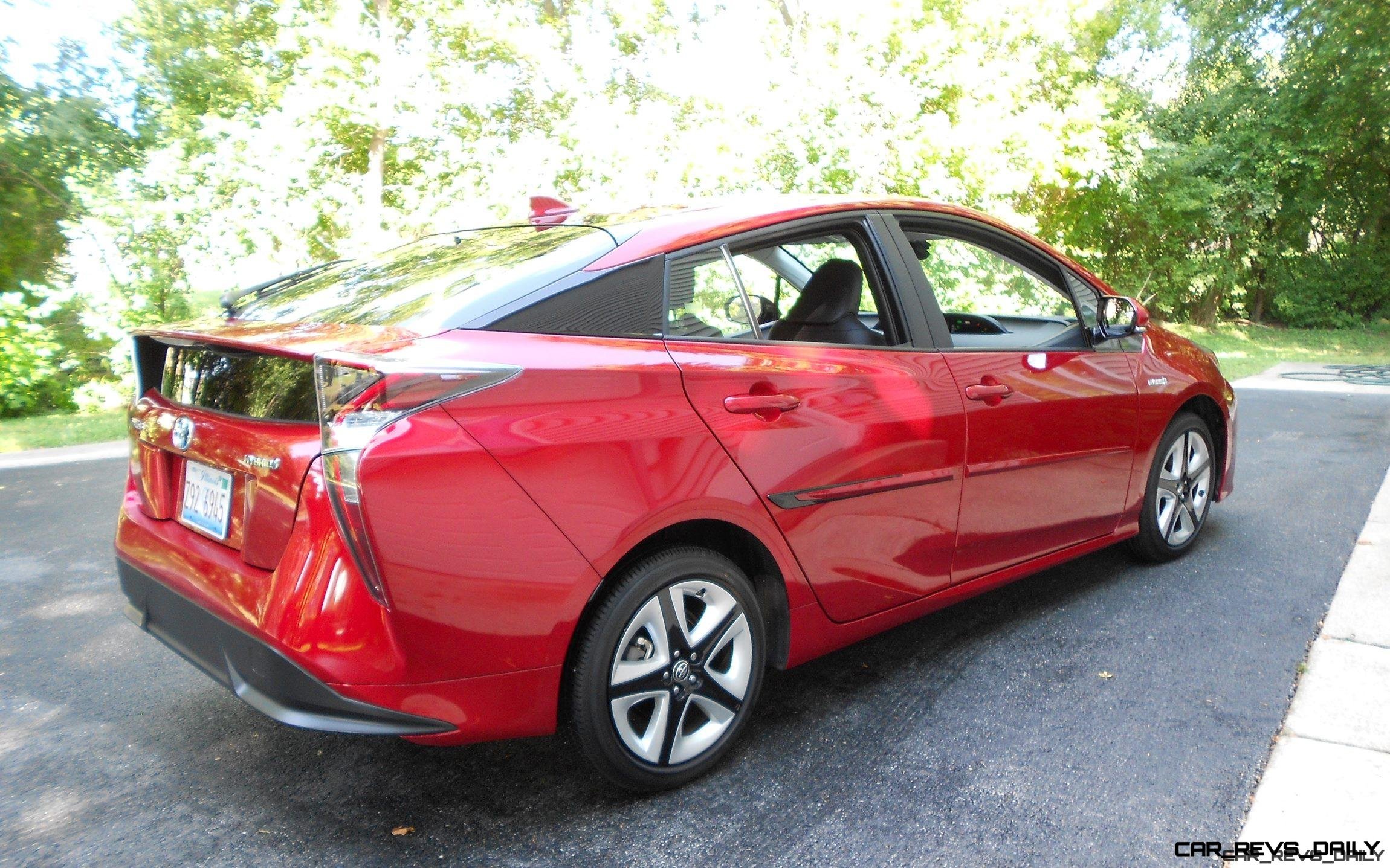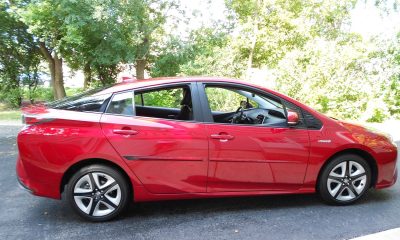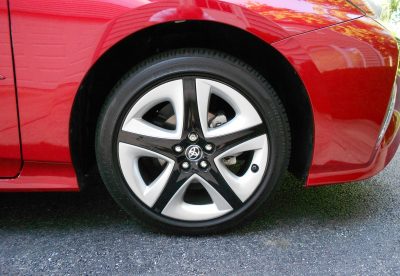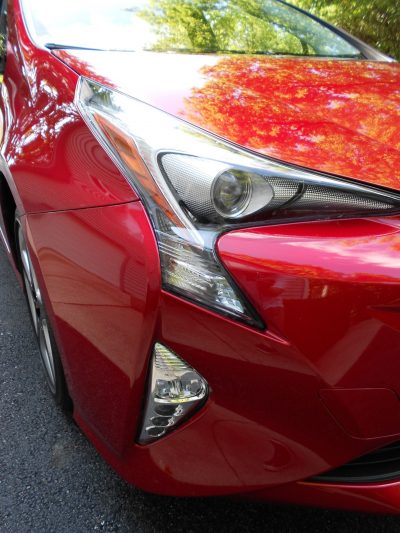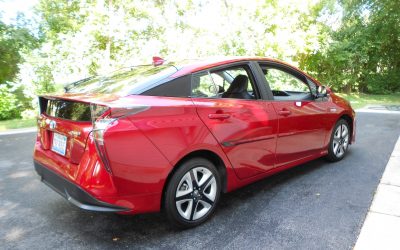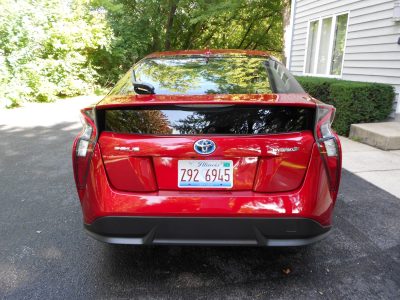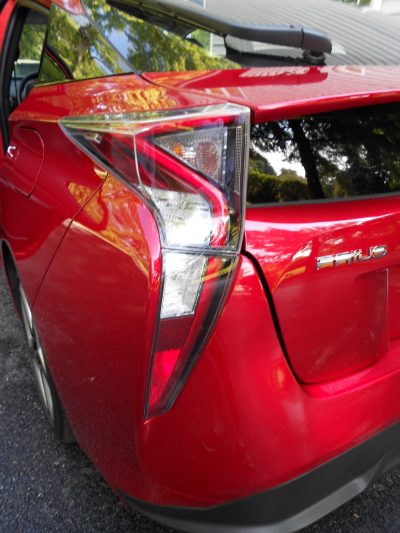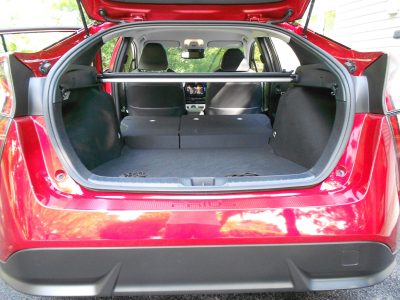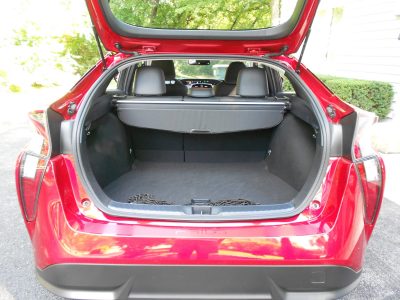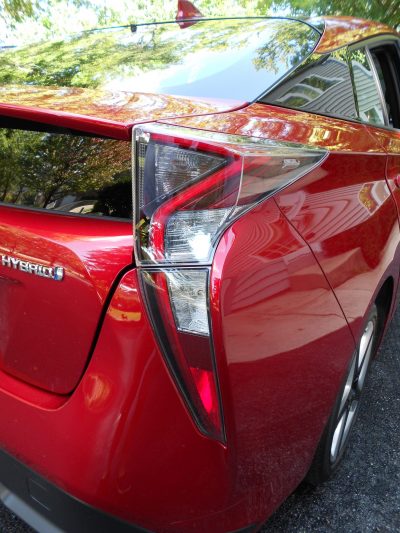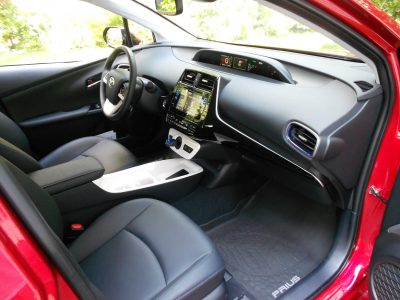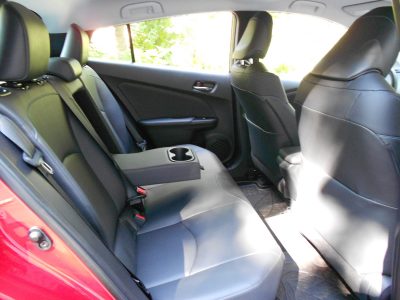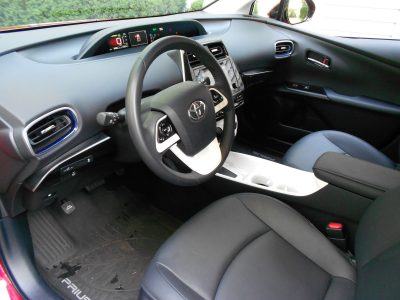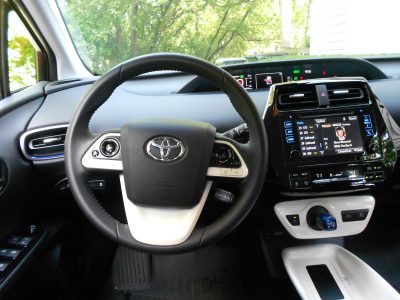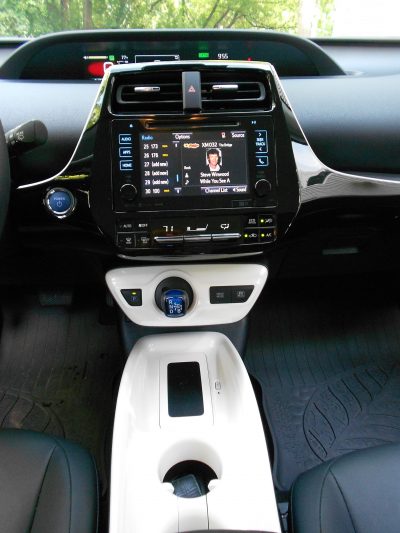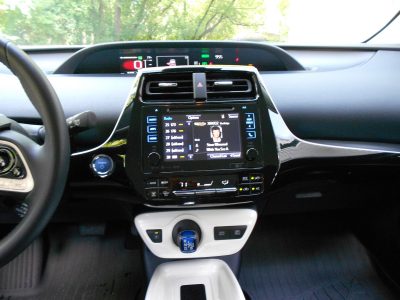When Toyota brought the first Prius to the US back in 2000, you knew it was a hybrid by driving it, and even just looking at it. It was an awkward looking thing that seemed to scream cheap sub-compact. Inside, it wasn’t much better, with cheap looking and feeling materials, and it didn’t offer many amenities. It was a purpose-built machine incorporating as many weight saving ideas built into it so that it could deliver outstanding gas mileage. If that meant Spartan interiors and few features, so be it. If it meant that the car wasn’t fun to drive, at least it drove past gas station after gas station, before fill-ups were necessary. I hadn’t driven one recently, so I was anticipating getting the new for 2016 model and see how it changed.
When they drove the car into my driveway to drop it off, I thought they had brought the wrong car. I was looking for a homely little sedan, but the new Prius is (dare I say it) stylish. There is no mistaking this 4th generation Prius for previous models. It’s a bit longer, wider, and has a lower roofline that helps make it sleeker looking. Add in some creases and bulges to the body panels, and you get more edgy visual interest. There are a lot of blacked-out areas on the car, such as the window surrounds, mirrors, the long strip across the back, and even the exterior door trim has some black portions mated to the color coordinated strips, to add some impact to the looks. The best new styling cues come at the corners, where the stylish LED dagger shaped tail lights cover the top of the deck and rear fender, and slash down to the lower rear and quarter panels.
The LED headlights follow the hood lines into the front fender and triangular fog lights peek out from the sides of the lower fascia. The Prius is still a hatchback, but it’s not as boxy looking as previous models. It’s all quite distinctive and sporty. Very un-Prius like. I think it’s less love it or hate it, and more love it or like it . . . and I like it.
The car is powered by both an inline, 4-cylinder gas engine and an electric motor. The power is down slightly from previous models, but the engines are more efficient, and tuned for the same torque number of 105 ft. lbs. but at a lower rpm. The overall result is that the 121hp combined output is enough to move the 3,080lb car easily away from stop lights, and any other driving situation. It feels quick, if not fast. But forget the power numbers, or zero to 60 time numbers. With this car, the numbers that Toyota has preferred to focus on are the gas mileage numbers. 54 City, and 50 highway. Those numbers are truly remarkable, and real world.
Inside the cabin you’ll find a more pleasing environment, and a more upscale look, but keep in mind that the test car was the top of the line Four Touring trim. There are new curved shapes and somewhat better materials to liven up visual interest. Matte and gloss finishes are nicely mated and some interesting scallops surrounding the air vents. However, the white plastic surrounding the console looks cheap and out of place. And the door armrests, center console, and door sills could be a bit more padded.
The front heated seats are comfortable, and there is good head and leg room up front. It’s still hard to get used to having no gauges in front of the tilt/telescope steering wheel. Toyota chose to stick with the driver info centered on the dash. I’ll choose to call that quirky. But I still hate the split rear window that obstructs vision, and serves no apparent purpose. A nice feature of this new interior is the wireless smart phone charging mat in the center console.
Rear seat room is adequate, not spacious, for two passengers, and with the new sloping roofline, taller passengers may feel cramped. Trunk space has grown a bit to 27 cubic feet, and the rear seats fold down to offer a generous cargo space of 66 cubic feet.
Previous models fell well short on the fun to drive meter. The new Prius is much better, but not great. The car feels solid, with no squeaks or rattles, due to 60% greater torsional rigidity, and a new multilink rear suspension. You have more confidence on a winding road than the last model, with less understeer. The electric steering is also better, and offers a bit more feedback, but this Prius falls short compared to other cars in the price and size range. The engine noise is louder than expected under acceleration, and the hard tire compound sends more shock waves through the cabin than desired. The ride quality is firm, but not uncomfortable, and there is still more body lean in turns than I like.
The Prius comes in six different trim levels: The Two starts at $24,685, the Two Echo at $25,165. The Three starts at $27,735 and the Three Touring at $28,115. The Four starts at $29,135 with the Four Touring going for $30,115.
The Echo model shaves some weight, to boost mileage figures, by using a lithium-ion battery, instead of nickel-metal-hydride batteries to shed 35 lbs. and deletes the rear wiper, and the space saver spare tire and jack (a tire inflator and repair kit is standard). It also fits even lower rolling resistant tires. The gain is 58 City and 53 Highway mileage figures.
Then every step up the trim levels gets you more convenience and comfort amenities, and more elaborate infotainment systems. You also get the synthetic leather upholstery, 17” wheels, and more safety features.
The test car came with standard features including Blind Spot monitor with cross traffic alert, pre collision system with pedestrian alert, lane departure warning, radar cruise control, auto high-beam, rain sensing wipers, auto on/off headlights, heated outside mirrors, fog lights, and LED head and tail lights.
Inside there is a larger 7” Nav screen, climate control, E-Tune app suite, 4.2” info screen, smart key with push button start, auto dimming rear view mirror with home link, and more. A few minor options, like a cargo net, door edge guards, and special color, brought the bottom line to $31,827 with freight.
After spending a week with this new Prius, I was impressed with how much better it is than previous models. It looks better, has a nicer interior with better materials, and it is more enjoyable to drive. But its main purpose for being is still the same . . . outstanding gas mileage.
You can get many cars in this size and price range that will be more fun to drive, and have more comfort amenities. A top of the line Hyundai Elantra, for example, with more content will even save you a few thousand dollars over this Prius. But while the Elantra gives you excellent gas mileage, they are not even in the same league. Elantra will get 27 City, versus the Prius’ 54 MPG. The Elantra gets 37 MPG on the highway, versus 50 for the Prius.
In 12,000 miles of city driving, the Elantra will cost you $1,388 in gas (@2.50 per gallon) versus $555 for the Prius. That’s a huge difference. And when gas goes back up to $3.50 a gallon, and it will, the savings will be even greater. And I understand that there are millions of drivers out there who don’t value fun-to-drive the same way that automotive journalists do. And Toyota makes this Prius for those folks who want a car with outstanding gas mileage. They must be doing something right, because they have sold more than 5 million Prius cars worldwide in the last 20 years, and this is the best one of them.
So if thrift is your main goal, nothing comes close to the Prius. And, this new Four Touring model won’t penalize you too much. You will still get a comfortable, stylish car with some excellent amenities.
2017 Toyota Prius Four Touring
By Ken “Hawkeye” Glassman
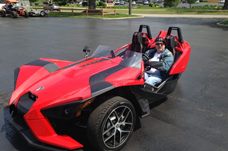
Ken “Hawkeye” Glassman has been a motor journalist for over 30 years, reviewing automobile, as well as motorcycle ride reviews and accessory reviews.
His car articles have appeared in Robb Report Magazine, Autoguide.com, Car-Revs-Daily.com and other media. His work has also appeared in Road Bike Magazine, Motorcycle Tour and Cruiser, SpeedTV.com, MotorcycleUSA.com and others.
As motorcycle columnist for The Daily Herald in suburban Chicago, the paper became the only major circulation newspaper in the country to have a separate weekly section devoted to motorcycles. Later he wrote a weekly column for Cyclefocus Magazine.

